Newton's First Law of Motion | Science Class 9 PDF Download
| Table of contents |

|
| Newton's First Law of Motion |

|
| Inertia |

|
| Types of Inertia |

|
| Inertia and Mass |

|
Have you ever wondered why a car stops when you apply brakes? Or why a ball keeps rolling on a smooth surface until it hits something? Or why a book stays on a table unless you push it or pull it? These are some examples of how objects behave when they are in different states of motion or rest. And the answer to these questions lies in the first law of motion given by one of the greatest scientists of all time, Sir Isaac Newton.
 Sir Isaac Newton
Sir Isaac Newton
Newton's First Law of Motion
A body at rest will remain at rest and a body in motion will remain in uniform motion unless an unbalanced forces acts on it to change its state of rest or of uniform motion.
The above law can be understood in two parts.
(i) A body at rest remains at rest unless an external unbalanced force acts on it to change its state of rest.
(ii) A body in motion will remain in uniform motion unless an external unbalanced force acts on it to change its state of uniform motion.
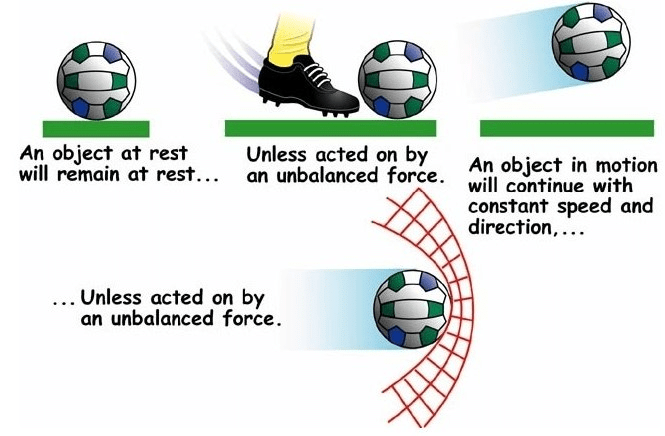 Newton's First Law of Motion
Newton's First Law of Motion
Newton's first law is also called the law of inertia.
Inertia
The tendency of a body to oppose any change in its state of rest or of uniform motion is called the inertia of the body.
Galileo's Law of Inertia
Galileo studied motion of objects on an inclined plane and found some results that are the basis of law of inertia. He found that
(i) Objects moving down a smooth inclined plane accelerate. fig (a)
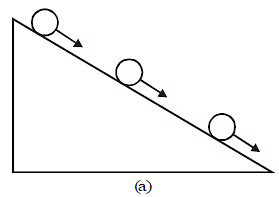
(ii) Objects moving up a smooth inclined plane retard. fig (b)
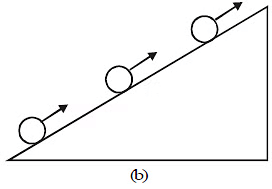
(iii) objects moving on a frictionless horizontal plane move with a constant velocity, having neither acceleration nor retardation. fig (c)

In another experiment using a double inclined plane, Galileo observed that
(i) A ball released from rest on one smooth inclined plane rolls down and climbs up the other smooth inclined plane.
- He found that In an ideal situation, when there is no friction, the final height of the ball is the same as its initial height.
(ii) When the slope of second smooth inclined plane is decreased, and the experiment is repeated, the ball still reaches the same final height. But in doing so, it travels a larger distance as shown in fig. b
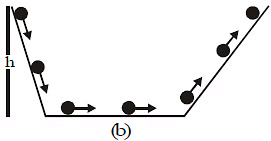
(iii) When the slope of second smooth inclined plane is made zero (i.e., the second plane is made horizontal), the ball travels an infinity distance in the ideal situation (when there is no friction).
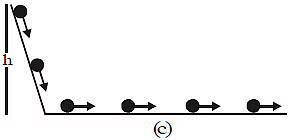
- From his experiments, Galileo concluded that the state of rest and the state of motion with constant velocity are equivalent. In both cases, no net force is acting on the body.
- Thus, Galileo concluded that if net external force is zero, a body at rest continues to be at rest, and a body in uniform motion continues to move uniformly along the same straight line. This is Galileo's law of inertia.
This, inherent property of all bodies, to resist their state of rest or of uniform motion along a straight line is called Inertia.
Types of Inertia
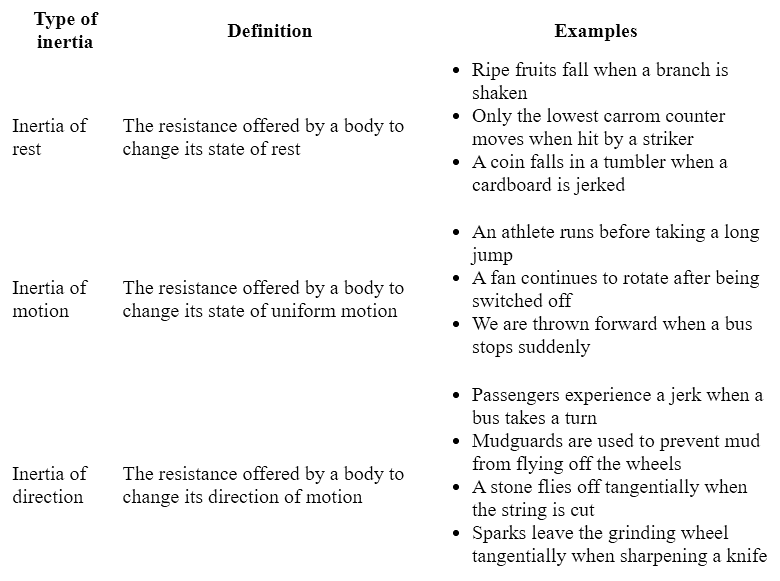
 |
Download the notes
Newton's First Law of Motion
|
Download as PDF |
Inertia and Mass
Inertia is the natural tendency of an object to remain at rest or in motion at a constant speed along a straight line.
Consider two stationary objects say a small table and a big table. Now if we apply the same amount of force on these two tables, then it is difficult to move the bigger table than the smaller table.
- It means, the heavy table oppose more to the change in its state of rest than the light or small table.
Thus, greater is the mass, greater is the inertia. Hence, inertia of a body is directly propotional to the mass of the body.
|
84 videos|384 docs|61 tests
|
FAQs on Newton's First Law of Motion - Science Class 9
| 1. What is Newton's First Law of Motion? |  |
| 2. What is inertia? |  |
| 3. What are the types of inertia? |  |
| 4. How is inertia related to mass? |  |
| 5. How does Newton's First Law of Motion relate to the concept of momentum? |  |






















